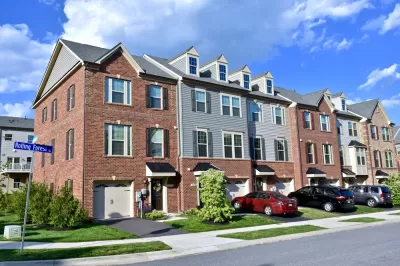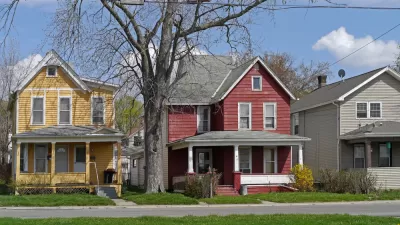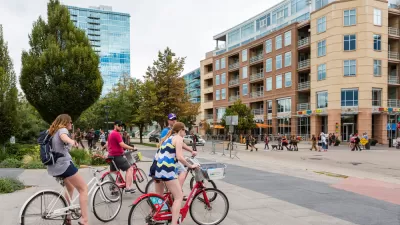In Arlington, restricting density to preserve neighborhood character isn't new. A rowhouse ban in 1938 may be one factor behind today's steep prices and gentrification.

David Whitehead covers the long-standing problem of "missing middle" housing in Arlington, Virginia. In the 1930s, during a boom period, developers were keen to replace older bungalows with rowhouses. "That didn't sit well with community leaders at the time, who hoped to preserve Arlington's then-suburban character. Rowhouses, they believed, would 'mar the suburban landscape.' And so, in 1938, the county changed its zoning to prohibit rowhouses."
Today, Whitehead argues, the Washington D.C. region faces a similar problem, but one that's been exacerbated by the previous century's failure to build infill housing. "According to its place in our metropolitan hierarchy, Arlington should have a lot of rowhouses. But it doesn't, because 79 years ago preserving a community character that was unpreservable anyway was a higher priority than building enough housing during an ongoing boom."
FULL STORY: Arlington banned rowhouses in 1938. We’re suffering the consequences now.

Alabama: Trump Terminates Settlements for Black Communities Harmed By Raw Sewage
Trump deemed the landmark civil rights agreement “illegal DEI and environmental justice policy.”

Study: Maui’s Plan to Convert Vacation Rentals to Long-Term Housing Could Cause Nearly $1 Billion Economic Loss
The plan would reduce visitor accommodation by 25% resulting in 1,900 jobs lost.

Planetizen Federal Action Tracker
A weekly monitor of how Trump’s orders and actions are impacting planners and planning in America.

Waymo Gets Permission to Map SF’s Market Street
If allowed to operate on the traffic-restricted street, Waymo’s autonomous taxis would have a leg up over ride-hailing competitors — and counter the city’s efforts to grow bike and pedestrian on the thoroughfare.

Parklet Symposium Highlights the Success of Shared Spaces
Parklets got a boost during the Covid-19 pandemic, when the concept was translated to outdoor dining programs that offered restaurants a lifeline during the shutdown.

Federal Homelessness Agency Places Entire Staff on Leave
The U.S. Interagency Council on Homelessness is the only federal agency dedicated to preventing and ending homelessness.
Urban Design for Planners 1: Software Tools
This six-course series explores essential urban design concepts using open source software and equips planners with the tools they need to participate fully in the urban design process.
Planning for Universal Design
Learn the tools for implementing Universal Design in planning regulations.
Caltrans
Smith Gee Studio
Institute for Housing and Urban Development Studies (IHS)
City of Grandview
Harvard GSD Executive Education
Toledo-Lucas County Plan Commissions
Salt Lake City
NYU Wagner Graduate School of Public Service





























